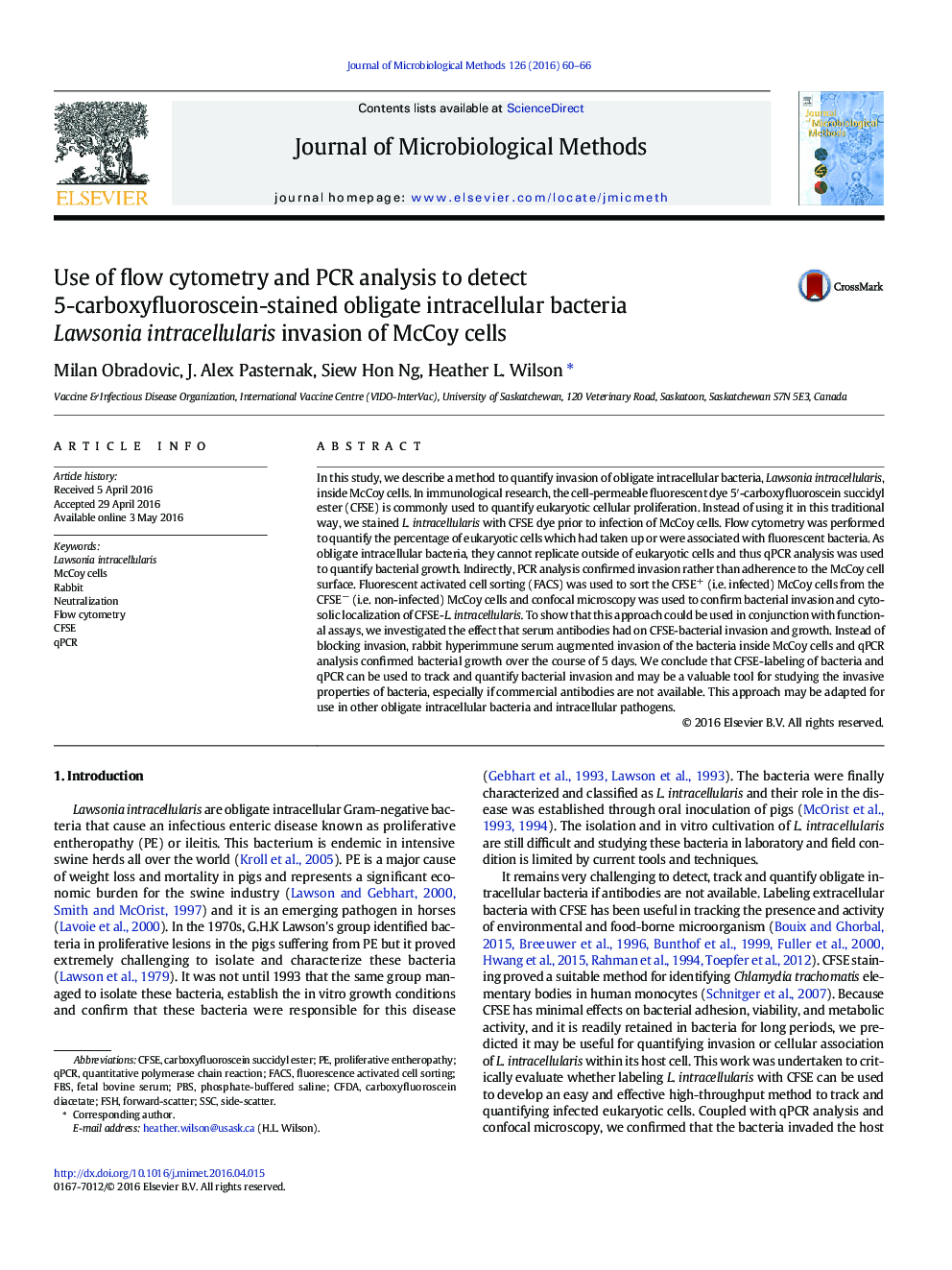| کد مقاله | کد نشریه | سال انتشار | مقاله انگلیسی | نسخه تمام متن |
|---|---|---|---|---|
| 2089702 | 1545917 | 2016 | 7 صفحه PDF | دانلود رایگان |

• Invasion or adherence of obligate intracellular bacteria can be established using CFSE and flow cytometry.
• qPCR can indirectly indicate invasion or adherence of Lawsonia intracellularis.
• Rabbit antibodies promote invasion of L. intracellularis into McCoy cells.
In this study, we describe a method to quantify invasion of obligate intracellular bacteria, Lawsonia intracellularis, inside McCoy cells. In immunological research, the cell-permeable fluorescent dye 5′-carboxyfluoroscein succidyl ester (CFSE) is commonly used to quantify eukaryotic cellular proliferation. Instead of using it in this traditional way, we stained L. intracellularis with CFSE dye prior to infection of McCoy cells. Flow cytometry was performed to quantify the percentage of eukaryotic cells which had taken up or were associated with fluorescent bacteria. As obligate intracellular bacteria, they cannot replicate outside of eukaryotic cells and thus qPCR analysis was used to quantify bacterial growth. Indirectly, PCR analysis confirmed invasion rather than adherence to the McCoy cell surface. Fluorescent activated cell sorting (FACS) was used to sort the CFSE+ (i.e. infected) McCoy cells from the CFSE− (i.e. non-infected) McCoy cells and confocal microscopy was used to confirm bacterial invasion and cytosolic localization of CFSE-L. intracellularis. To show that this approach could be used in conjunction with functional assays, we investigated the effect that serum antibodies had on CFSE-bacterial invasion and growth. Instead of blocking invasion, rabbit hyperimmune serum augmented invasion of the bacteria inside McCoy cells and qPCR analysis confirmed bacterial growth over the course of 5 days. We conclude that CFSE-labeling of bacteria and qPCR can be used to track and quantify bacterial invasion and may be a valuable tool for studying the invasive properties of bacteria, especially if commercial antibodies are not available. This approach may be adapted for use in other obligate intracellular bacteria and intracellular pathogens.
Journal: Journal of Microbiological Methods - Volume 126, July 2016, Pages 60–66